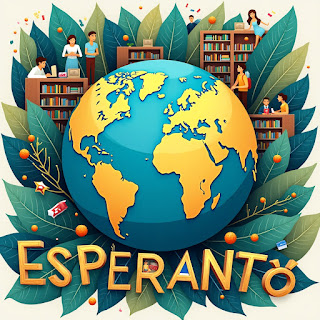Esperanto: The Dream of a Universal Language
In 1887, Polish ophthalmologist L. L. Zamenhof introduced Esperanto, a constructed language designed to transcend borders and (1) foster global (2) understanding. Zamenhof, writing under the pseudonym "Doktoro Esperanto" (Doctor Hopeful), (3) envisioned it as a neutral auxiliary language to (4) bridge cultural (5) divides and reduce conflicts rooted in miscommunication. Unlike natural languages, Esperanto was (6) crafted with simplicity in mind: its grammar is regular, its words are built from common roots, and its structure avoids the idiosyncrasies that make many languages (7) challenging to learn.
Esperanto’s lexicon draws primarily from European languages like Latin, German, and Slavic tongues, but its morphology allows speakers to create new words by combining prefixes, suffixes, and roots. For example, malsanulejo (hospital) breaks down into mal- (opposite), san- (health), -ul- (person), and -ejo (place). This logical design (8) enables learners to (9) achieve fluency faster than in most natural languages.
Despite its practical advantages, Esperanto never became the universal lingua franca Zamenhof hoped for. Political tensions, the rise of English as a global language, and skepticism about its Eurocentric vocabulary limited its reach. However, it cultivated a passionate community. Today, thousands of adepts worldwide use it at international (10) gatherings like the Universala Kongreso and online platforms. Organizations such as the Universala Esperanto-Asocio (11) advocate for its role in education and diplomacy, arguing that a neutral language could promote equality in multilingual dialogues.
Critics (12) dismiss Esperanto as a utopian project, yet its cultural impact is undeniable. It (13) boasts original literature, music, and even films. For enthusiasts, Esperanto is more than a language—it’s a symbol of idealism and a tool to connect with (14) like-minded individuals across (15) disparate cultures. While it hasn’t ended wars or erased nationalism, it endures as a testament to humanity’s longing for harmony through shared communication.
Esperanto’s lexicon draws primarily from European languages like Latin, German, and Slavic tongues, but its morphology allows speakers to create new words by combining prefixes, suffixes, and roots. For example, malsanulejo (hospital) breaks down into mal- (opposite), san- (health), -ul- (person), and -ejo (place). This logical design (8) enables learners to (9) achieve fluency faster than in most natural languages.
Despite its practical advantages, Esperanto never became the universal lingua franca Zamenhof hoped for. Political tensions, the rise of English as a global language, and skepticism about its Eurocentric vocabulary limited its reach. However, it cultivated a passionate community. Today, thousands of adepts worldwide use it at international (10) gatherings like the Universala Kongreso and online platforms. Organizations such as the Universala Esperanto-Asocio (11) advocate for its role in education and diplomacy, arguing that a neutral language could promote equality in multilingual dialogues.
Critics (12) dismiss Esperanto as a utopian project, yet its cultural impact is undeniable. It (13) boasts original literature, music, and even films. For enthusiasts, Esperanto is more than a language—it’s a symbol of idealism and a tool to connect with (14) like-minded individuals across (15) disparate cultures. While it hasn’t ended wars or erased nationalism, it endures as a testament to humanity’s longing for harmony through shared communication.




Comentarios
Publicar un comentario